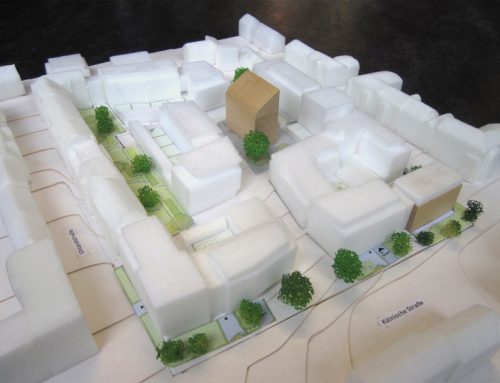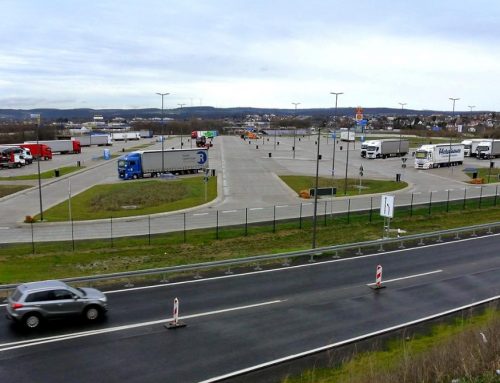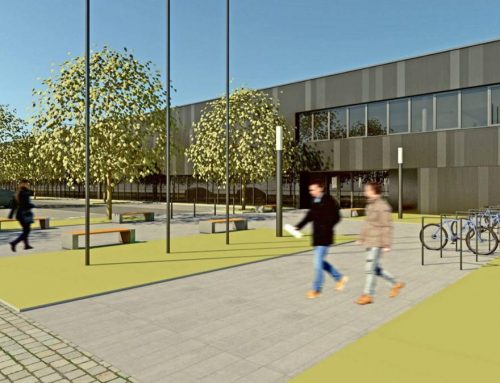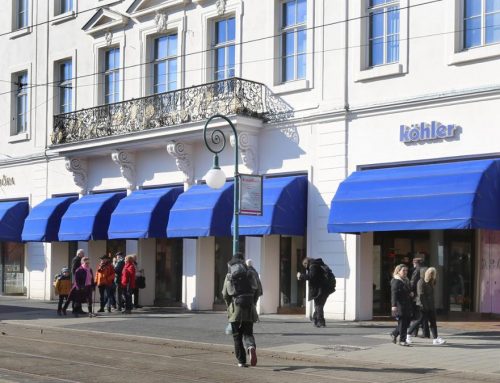Town Planning Council Nolda: Supply Office on Frankfurter Straße is demolished for apartments.
The demand for apartments is large, the supply is too small and yet many houses are empty. Reason to talk to City Councilor Christof Nolda (Greens) about the Kassel housing market.
The vacancy rate was last estimated at one percent. That would be about 320 houses in Kassel. Is this a realistic value?
Christof Nolda: Vacancies are systematically recorded only for the portfolio of housing associations. However, just under 80 percent of Kassel home ownership is owned by private individuals and investors. At their vacancy, there are no reliable figures. Any empty house is a nuisance, on the whole city considered the problem manageable.
Are you observing that speculators are frolicking, using vacancies to drive prices down?
Nolda: That hardly makes sense. Due to rising rental and purchase prices, owners should be interested in renting or selling their properties. The income that can be earned from letting in Kassel generally exceeds the potential speculative gains.
Nevertheless, vacancies are also available in popular residential areas.
Nolda: These are often cases where heirs disagree or where investors have lost track of their holdings. Since the city has little room for maneuver. The property right is protected. We are only entitled to intervene actively in the event of grave violations of the duty of care in buildings.
Currently, between 200 and 300 apartments are built each year. Is that enough?
Nolda: That’s not enough. We are working on a significant increase in production to 600 to 800 apartments. We have had so many housing projects in the pipeline for a long time. Currently there are 8,000 apartments that are in prospect. These include projects in Süsterfeld, Lossegrund, Feldlager, Felsenkeller, Nordshausen, on the Jägerkaserne I site in the context of the construction land offensive of the state of Hessen, Salzmann and so on. In addition, the sale of the care office on the Frankfurter Straße through the country is imminent. There are apartments planned in the three-digit range.
Home ownership can no longer afford many families in Kassel. Single-family homes cost between 300,000 and 500,000 euros and family-friendly apartments are rarely below 250,000 euros.
Nolda: A means to counter the trend is the construction of new apartments. We force this. We are also developing housing projects with low rental rates. These include, for example, the apartments that are being built on the premises of Jägerkaserne I and Lossegrund. There we can intervene to control the prices.
The number of social housing has dropped to 6,000. Has the construction of social housing been missed?
Nolda: It is true that gradually built with public funds apartments fall out of the price commitments. It is all the more pleasing that new social housing is to be created in many projects such as Salzmann, Martini-Brauerei and Lossegrund. I also expect tailwind from the new guidelines of the state of Hesse for social rental space promotion. These include significantly improved promotional terms for potential investors and housing companies.
The denser development causes trouble for local residents. Can you understand this?
Nolda: Compression sounds so threatening. I prefer to speak of interior development. This is also set as a goal in the Building Code. Because it makes sense to fill the gaps in a city instead of greenfields for several reasons: less energy is used, less land is sealed, there is less traffic and the city’s infrastructure is better utilized. In addition, a high density does not have to have a negative impact on the quality of living. The front west is the most densely populated district and still a sought after location.
Where does the resistance of the local residents come from?
Nolda: This often happens when the residents perceive a contrast to the existing buildings. The development plans, some of which were built 40 years ago, allow significantly larger houses. If, according to the zoning plan, two full floors are permitted, this does not mean that the building may only protrude two floors out of the ground. According to the Hessian Building Code, a staggered storey is also permitted which may correspond to a maximum of 75 per cent of the floor area of the lower floors below. In addition, there is a basement, which may also partially protrude from the ground. Thus, a two-storey house, depending on the angle of view, appears like a three- or four-storey building. Every architect strives for the optimal use of land.
But could not you change the development plans?
Nolda: Development plans can not be changed retroactively, but only in a new procedure by the city council. If we intervene in legally binding development plans and reduce the structural utilization of the property, this may affect the value of the land. Any affected owner could claim a loss of confidence or compensation when changing a development plan, because the buildability was restricted. In addition, 60 percent of Kassel’s residential construction land has no development plan anyway. There applies paragraph 34 of the Building Code. In other words, a new building must be based on the surrounding construction method as well as its use or the property area to be overbuilt. Because of this relative formulation, it often comes to legal disputes, because it is disputed which other buildings serve as a reference.
How big is the influence of the city on the builder?
Nolda: The margins are limited. What is not forbidden is allowed. Restrictions apply almost only to the size of the building anyway. There is no obligation for aesthetic design. But with our Charter for Building Culture, we try to raise awareness amongst architects and builders that they also have a responsibility for the city as a whole.
Source: HNA dated 24.07.2018, JBG Research




